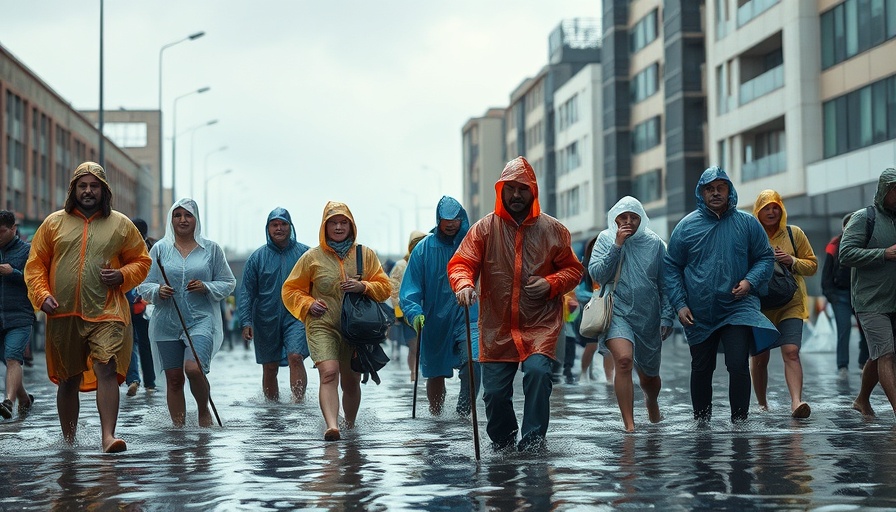
Severe Weather Warning: What You Need to Know About KwaZulu-Natal's Rainfall
The South African Weather Service (SAWS) has recently issued an urgent weather advisory, warning of potentially disruptive rainfall and strong winds along the KwaZulu-Natal coast. As this weather system is expected to settle in throughout the week, communities in areas such as Durban and Richards Bay are advised to prepare for severe conditions. The predominant concern is the possibility of localized flooding, particularly in low-lying regions.
Impact on Local Communities: A Growing Concern
Reports indicate that residents in coastal towns are already facing challenges due to unpredictable weather patterns. Flooding has become increasingly common, raising alarms about the adequacy of current infrastructure to cope with such events. According to meteorologist Sihle Dlamini, the areas most likely to be impacted are Durban, KwaDukuza, and parts of Richards Bay. With these developments, local governments are urged to enhance their disaster response strategies, particularly as South Africa grapples with various socio-economic problems, from rising unemployment to inadequate service delivery.
Climate Change and Its Consequences
This current weather situation is not isolated but part of a bigger narrative on climate change and environmental degradation in South Africa. Experts warn that the frequency and intensity of these weather-related events will likely increase if proactive measures are not implemented. The rising danger of severe storms and flooding not only exacerbates existing issues like infrastructure decay but also elevates the risk of public health crises in the aftermath of such events.
Government Accountability: The Role of Policy
In the light of these pressing weather warnings, there is a renewed call for the government to demonstrate accountability in its policy framework concerning disaster preparedness and environmental management. The intersection of politics and climate responsiveness is crucial, as communities look towards leadership that prioritizes sustainable and equitable strategies. The maintenance of vital infrastructures, such as drainage systems, must be prioritized to mitigate the adverse effects of future rainfalls.
Future Predictions and Trends: What's Next for KZN?
Forecasts indicate that disruptive rainfall could persist in the region, signaling not just immediate risks but long-term implications for economic stability and public safety. These weather patterns must prompt discussions on regional disaster management frameworks and climate resilience adaptations. As citizens await a government response, the significant challenge remains whether action will translate into effective measures or if continued inaction will lead communities into a cycle of crisis.
Final Thoughts and Next Steps
The weather forecast for KwaZulu-Natal serves as a reminder of our changing climate and the necessity for proactive governance. Communities and authorities must work in unison to prepare for and respond to these increasingly frequent weather challenges. As residents brace for potential storms, it is pertinent that local governments ramp up their disaster readiness metrics and engage with citizens on protective measures.
In conclusion, those in affected areas should remain vigilant and stay informed by following updates from SAWS and local authorities. By being proactive and prepared, communities can better withstand the brunt of nature's unpredictability.
 Add Row
Add Row  Add
Add 




Write A Comment